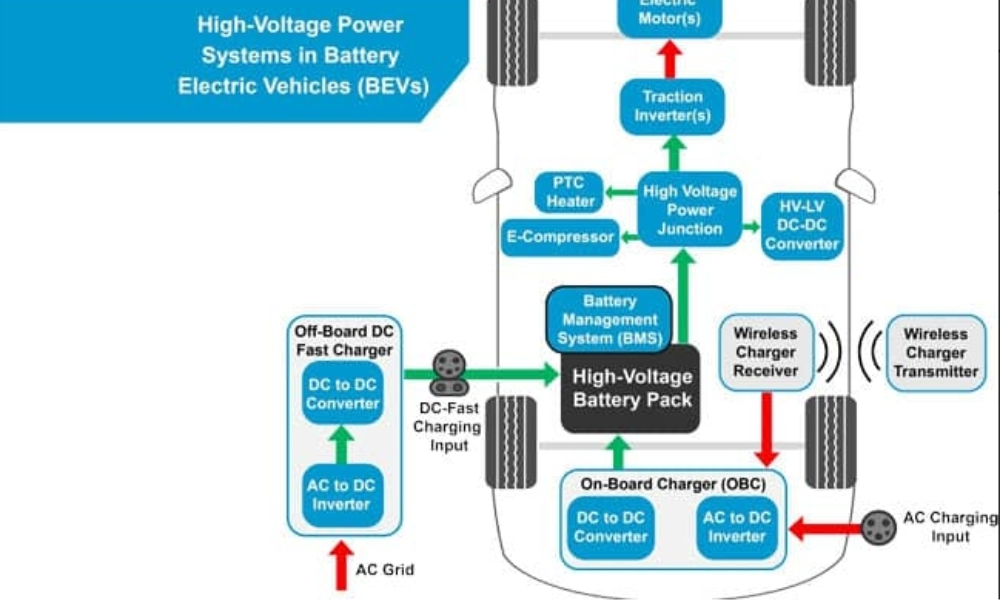The power electronic systems in an electric vehicle (EV) feature a wide variety of capacitors.
From DC-link capacitors to safety capacitors and snubber capacitors, these components play a critical role in stabilizing and safeguarding the electronics from factors like voltage spikes and electromagnetic interference (EMI).

There are four main topologies of traction inverters, with differences based on type of switch, voltage and levels. Choosing the appropriate topology and related components is critical in designing traction inverters that meet your application’s efficiency and cost requirements.
As stated, there are four most used topologies in EV traction inverters, as shown in Figure 2.:
-
Level Topology featuring the 650V IGBT switch
-
Level Topology featuring the 650V SiC MOSFET switch
-
Level Topology featuring the 1200V SiC MOSFET switch
-
Level Topology featuring the 650V GaN Switch
These topologies fall into two subsets: 400V Powertrains & 800V Powertrains. Between the two subsets, it’s more common to use the “2-level” topologies. “Multi-level” topologies are used in higher voltage systems such as electric trains, tramways and ships but they are less popular due to higher cost and complexity.

-
Snubber Capacitors – Voltage suppression is important to protect circuits from large voltage spikes. Snubber capacitors connect to the high-current switching node to protect electronics from voltage spikes.
-
DC-Link Capacitors – In EV applications, DC-link capacitors help offset the effects of inductance in inverters. They also serve as filters that protect EV subsystems from voltage spikes, surges and EMI.
All of these roles are very important to the safety and functionality of traction inverters, but the design and specifications of these capacitors change based on which traction inverter topology you choose.
Post time: Dec-15-2023

